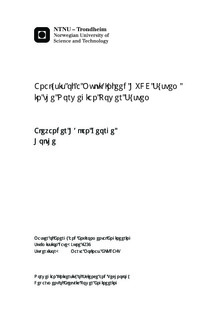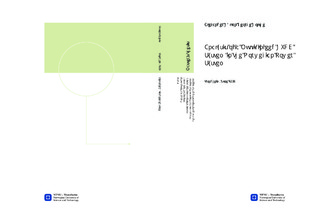| dc.contributor.advisor | Molinas, Marta | nb_NO |
| dc.contributor.author | Holthe, Alexander Håkan George | nb_NO |
| dc.date.accessioned | 2014-12-19T13:56:30Z | |
| dc.date.available | 2014-12-19T13:56:30Z | |
| dc.date.created | 2014-10-11 | nb_NO |
| dc.date.issued | 2014 | nb_NO |
| dc.identifier | 754710 | nb_NO |
| dc.identifier | ntnudaim:11313 | nb_NO |
| dc.identifier.uri | http://hdl.handle.net/11250/258017 | |
| dc.description.abstract | The impact of a new Modular Multi-Level Converter (MMC) on a Line Commutated Converter (LCC) in the same AC-grid, representing the future system of NordLink and NorNed is investigated. This multi-infeed HVDC system is compared against today's LCC stand alone system. A method for detecting commutation failure is proposed. The commutation failure immunity index is 36% and 28% respectively. The result indicate that the MMC-link hence mitigates the weakness of the LCC-link, and makes the LCC inverter less prone to commutation failure. The multi-infeed HVDC system is analysed in both steady and transient state. The MMC is able to control the active and reactive power, and enhances AC voltage regulation. Existing voltage supporting equipment can thus be utilized for a more continuous voltage regulation when the new MMC-link is connected, and to minimize losses. Single and three phase to ground faults are applied. The results indicate that a LCC inverter in weak AC grids may suffer from commutation failure. The MMC is able to ride through relatively severe AC faults. The results indicates that the multi-infeed system improves the performance when AC faults are applied as compared the existing LCC stand alone system. The MMC-link is able to mitigate the impact of AC faults, thus helping the LCC-link recover faster. The coupling effect between AC and DC overhead lines sharing the same Rights-of-Way is investigated, and a single pole to ground fault is applied. Induced DC currents into AC lines are detected. The peak rms neutral current in the AC lines is found to be 1000 A for fault location close to MMC inverter. Two mitigation methods are proposed. First, an optimal displacement of the middle AC tower is found to be 45 meters apart from the DC tower, and leads to a reduction of 22.3% (777 A). Second, transposition of the AC-lines efficiently reduced the coupling effect, as it averages the unbalance between the three phases. | nb_NO |
| dc.language | eng | nb_NO |
| dc.publisher | Institutt for elkraftteknikk | nb_NO |
| dc.title | Analysis of a Multi-Infeed HVDC System in the Norwegian Power System | nb_NO |
| dc.type | Master thesis | nb_NO |
| dc.source.pagenumber | 152 | nb_NO |
| dc.contributor.department | Norges teknisk-naturvitenskapelige universitet, Fakultet for informasjonsteknologi, matematikk og elektroteknikk, Institutt for elkraftteknikk | nb_NO |

